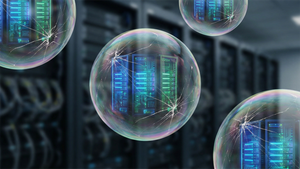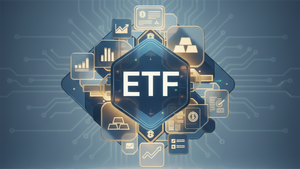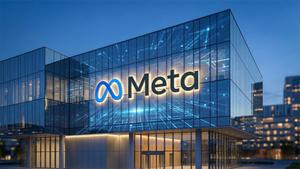
Tesla (NASDAQ: TSLA) is at the precipice of a monumental transformation, pivoting its core identity from a pioneering electric vehicle manufacturer to an ambitious AI and robotics powerhouse. This strategic shift is underscored by the tentative launch of its Robotaxi services in Austin and San Francisco, the persistent and often-criticized delays in its Full Self-Driving (FSD) software, and a formidable investment in artificial intelligence, exemplified by its Optimus humanoid robot project. These developments signal not just a new chapter for Tesla but a potential seismic shift across the automotive, ride-sharing, and labor industries, promising both unprecedented opportunities and significant challenges.
Tesla's Ambitious Pivot: From EVs to AI and Robotics
Tesla's recent activities paint a clear picture of its future ambitions. In June 2025, the company launched its initial Robotaxi service in Austin, Texas, utilizing Model Y vehicles for a select group of users. This was followed by a similar rollout in the San Francisco Bay Area in August, though both services still frequently operate with remote monitoring and safety drivers, indicating that true, unsupervised autonomy is still a work in progress. Despite this cautious approach, Tesla's stated goal is to deploy 1,000 robotaxis in Austin within months and to have the service available to half of the U.S. population by year-end, pending regulatory approvals. The Robotaxi app, upon its launch, garnered significant attention, reportedly seeing 2 million downloads, surpassing early adoption rates of rivals like Uber and Waymo.
Concurrently, the much-anticipated FSD V14 has experienced several delays throughout 2025. Originally slated for release in August, its rollout has been pushed to the end of the year, around the Christmas holidays. CEO Elon Musk has touted FSD V14 as a "dramatic gain," promising a 10x higher parameter count, enhanced safety features, and a more "sentient" driving experience. However, he clarified that FSD V14 remains "Supervised," requiring human attention. These delays highlight the immense technical complexities in achieving full Level 5 autonomy, prompting skepticism among consumers and drawing increased scrutiny from regulatory bodies such as the National Highway Traffic Safety Administration (NHTSA), which is actively investigating Tesla's FSD system following reported incidents.
Central to Tesla's long-term vision is its aggressive expansion into AI and robotics. Musk has repeatedly emphasized that the Optimus humanoid robot could eventually account for a staggering 80% of Tesla's valuation, unlocking an estimated $10 trillion market opportunity. Tesla plans to build thousands of Optimus robots in 2025, with an ambitious target of reaching 10,000 units. These robots are intended to revolutionize manufacturing by replacing human workers in repetitive or dangerous tasks within Tesla's own factories, promising significant cost savings and efficiency gains. The company is also heavily investing in its Dojo supercomputer for AI training and developing next-generation AI chips in partnership with companies like NVIDIA (NASDAQ: NVDA) and Samsung (KRX: 005930), underscoring its commitment to becoming a vertically integrated AI platform.
Navigating the New Frontier: Winners and Losers
Tesla's audacious pivot has sent ripples through the financial markets, creating potential winners and losers across various sectors.
Tesla (NASDAQ: TSLA) itself stands as the primary potential winner if its ambitious robotaxi and robotics plans materialize. A successful, scalable robotaxi network could unlock high-margin recurring software revenue, transforming its business model from automotive to a dominant software and services provider. Similarly, Optimus's ability to automate manufacturing could significantly reduce costs and potentially create a new multi-trillion-dollar market for humanoid robots. Elon Musk's personal $1 billion stock purchase in September 2025 and a proposed compensation package tied to these ambitious milestones underscore internal confidence in this vision. However, delays, regulatory hurdles, and intense competition also pose substantial risks to its stock valuation, which increasingly reflects future potential rather than current fundamentals.
Beyond Tesla, AI component suppliers like NVIDIA (NASDAQ: NVDA) and Samsung (KRX: 005930) are poised to benefit. NVIDIA's GPUs are crucial for advanced AI training, including Tesla's efforts, while Samsung is partnering with Tesla for next-generation AI chip manufacturing. Companies involved in advanced sensor technology, such as Luminar Technologies (NASDAQ: LAZR) for LiDAR (though Tesla currently favors vision-only), and Mobileye (NASDAQ: MBLY), an Intel (NASDAQ: INTC) subsidiary, supplying ADAS chips to numerous automakers, could also see increased demand as the autonomous driving industry matures.
On the other hand, traditional ride-sharing companies like Uber (NYSE: UBER) and Lyft (NASDAQ: LYFT) face long-term disruption. While they are actively forging partnerships with autonomous vehicle developers like Waymo (Alphabet (NASDAQ: GOOGL) subsidiary) and Baidu (NASDAQ: BIDU) to integrate robotaxis into their platforms, a fully scaled, cost-efficient Tesla robotaxi network could severely undercut their existing human-driver-dependent models. Ride-sharing drivers and gig economy workers face the most immediate threat, as widespread robotaxi deployment will inevitably reduce demand for human labor, leading to significant societal and economic shifts. Other EV manufacturers, particularly those without a compelling autonomous driving or AI strategy, might struggle to keep pace with Tesla's valuation, which is increasingly driven by its tech ambitions. Autonomous driving competitors facing significant technical or regulatory hurdles, such as GM's (NYSE: GM) Cruise, which scaled back operations and faced funding issues in late 2024, illustrate the high-stakes and challenging nature of this industry.
Industry Tremors: Broader Implications and Historical Parallels
Tesla's aggressive push into autonomous driving and robotics is more than just a company-specific event; it's a powerful force shaping broader industry trends and creating wide-ranging implications. The company's "vision-only" strategy, leveraging massive amounts of real-world data from its vehicle fleet for AI training via its Dojo supercomputer, challenges the prevailing "rich data" approach favored by competitors like Waymo and Cruise, who rely on expensive sensor suites including LiDAR and extensive mapping. Tesla's approach, if proven superior and scalable, could democratize autonomous technology by reducing hardware costs and accelerating deployment.
The pursuit of robotaxis aligns with the broader industry trend of Mobility-as-a-Service (MaaS), where vehicle ownership may decrease in favor of on-demand transportation. This could trigger a ripple effect, compelling other automakers and tech companies to accelerate their own autonomous driving programs or forge strategic alliances. Companies like Waymo and Baidu Apollo, already operating driverless services in select cities, are direct competitors, and Tesla's entry intensifies the race for market share. Mobileye, as a prominent supplier of ADAS and AV platforms to the wider automotive industry, could benefit as automakers seek third-party solutions to compete with Tesla without relying on a direct rival.
Regulatory and policy implications are profound. Tesla's FSD delays and incidents have amplified scrutiny from federal bodies like NHTSA, leading to investigations and calls for greater transparency on safety data. The lack of a unified federal regulatory framework in the U.S., coupled with diverse state-level regulations and stricter standards in Europe, creates a complex landscape for widespread autonomous vehicle deployment. Policymakers are grappling with how to balance innovation with public safety, consumer trust, and ethical considerations. The emergence of humanoid robots like Optimus also raises entirely new regulatory, ethical, and societal questions concerning job displacement, safety in public and industrial settings, and the long-term impact on human labor.
Historically, Tesla's disruptive strategy draws parallels to transformative shifts across industries. Henry Ford's mass production of the Model T revolutionized automotive accessibility, much as Tesla aims to democratize advanced AI. The challenge Tesla poses to traditional automakers mirrors the disruption faced by American "Big Three" from Japanese manufacturers in the 1970s, emphasizing efficiency and technological innovation. The ambition to create a dominant new technological paradigm with Optimus, potentially surpassing the market impact of iconic products like the iPhone, echoes the "waves of creative destruction" described by economist Joseph Schumpeter, where new innovations fundamentally reshape economies and industries.
The Road Ahead: Navigating a Future Defined by AI
The trajectory of Tesla and the broader autonomous driving and robotics industries in the coming years will be defined by a delicate balance of technological breakthroughs, regulatory adaptations, and market acceptance.
In the short-term, Tesla will likely focus on refining its FSD software, with FSD V14 rolling out by year-end, and gradually expanding its supervised robotaxi services. The immediate challenge is demonstrating consistent safety and reliability to gain public trust and regulatory approval for truly unsupervised operations. For the broader autonomous driving industry, we can expect continued expansion of Level 3 and Level 4 systems, particularly in geofenced areas for ride-sharing and hub-to-hub trucking. The humanoid robotics market will remain in its early industrial deployment phase, with pilot testing primarily in manufacturing and logistics sectors.
Long-term possibilities for Tesla are transformative. A fully realized robotaxi network could position it as a dominant force in autonomous ride-hailing, generating recurring high-margin software revenue. Successful deployment of Optimus could revolutionize global manufacturing, logistics, and even domestic services, allowing Tesla to tap into a multi-trillion-dollar market beyond vehicles. The company's strategic pivot to an AI and robotics leader requires continued investments in its AI infrastructure, including partnerships for cutting-edge AI chips and the continued utilization of its Dojo supercomputer for training.
However, significant challenges remain. FSD delays have eroded credibility and highlighted the inherent difficulties of achieving full autonomy in diverse, unpredictable real-world scenarios. Regulatory hurdles, particularly for unsupervised driving and cross-border FSD deployment (e.g., in China), are substantial. In the humanoid robotics space, technical challenges such as improving dexterity, battery life, and preventing overheating are critical, alongside the immense task of scaling production while driving down costs. Tesla also faces fierce competition from established players like Waymo and Baidu in autonomous driving, and emerging rivals such as Figure AI and Boston Dynamics in humanoid robotics.
Potential scenarios and outcomes range widely. A successful execution of Tesla's vision could lead to unprecedented growth and a redefinition of its market capitalization, making it a technology giant on par with the largest tech companies. Conversely, sustained FSD delays, regulatory setbacks, or an inability to scale Optimus production cost-effectively could lead to market skepticism, increased competition eroding market share, and a significant reassessment of its valuation. The path forward for Tesla is a high-stakes gamble, with its future inextricably linked to its ability to deliver on its ambitious AI and robotics promises.
The Dawn of a New Era: A Concluding Assessment
Tesla's audacious pivot towards becoming a full-fledged AI and robotics company marks a pivotal moment in the history of technology and finance. The interplay between its Robotaxi launches, the evolving journey of FSD, and the monumental investments in Optimus signals a profound reorientation of the company's identity and its long-term strategic goals. This shift holds the potential to not only redefine Tesla (NASDAQ: TSLA) itself but also to fundamentally reshape transportation, labor markets, and the broader global economy, ushering in an era of unprecedented automation and efficiency.
The sheer ambition of Tesla's vision—envisioning a world where autonomous systems handle mundane and dangerous tasks, and mobility is primarily a service—is compelling. While the immediate implications include both cautious optimism around initial robotaxi deployments and frustration over persistent FSD delays, the long-term outlook for the autonomous driving market, projected to reach hundreds of billions of dollars, and the humanoid robotics market, poised for explosive growth to over $200 billion by 2030, provides the rationale for Tesla's high-stakes gamble. This strategy, if successfully executed, would transform Tesla into a dominant software and services provider in the AI and automation space, yielding a lasting impact on how industries operate and how humans interact with technology.
For investors, the coming months will be critical to discerning the reality behind the grand vision. Key indicators to watch include:
- Robotaxi Scalability and Profitability: Investors should seek concrete data on the expansion of truly driverless robotaxi operations beyond pilot programs, including geographic reach, active vehicle counts, and progress towards financial viability.
- Optimus Production Milestones: Close attention must be paid to updates on Optimus's production timeline and cost reduction efforts. Achieving ambitious targets, such as tens of thousands of units by 2026, will be a crucial validation point for its commercial viability.
- FSD Regulatory Breakthroughs: Progress in navigating complex regulatory frameworks for FSD, particularly for broader international deployment in key markets like China and further expansion within Europe, will be a significant de-risking factor.
- AI Chip Strategy and Partnerships: Observe the effectiveness of Tesla's ongoing partnerships with NVIDIA (NASDAQ: NVDA) and Samsung (KRX: 005930) for AI chip development and the continued leverage of the Dojo supercomputer for AI model training.
- Financial Metrics Beyond EVs: While EV sales remain important, investors should look for tangible signs that AI and robotics initiatives are beginning to contribute significantly to revenue and margin expansion, gradually offsetting potential declines or increased competition in the core automotive business.
- xAI Integration: The proposed shareholder vote on investing in Elon Musk's xAI startup warrants attention, as it could reshape Tesla's AI strategy and resource allocation, albeit with potential conflicts of interest.
Tesla's redefinition as an AI and robotics company presents immense long-term upside. However, successful execution in these highly competitive and technologically demanding fields will be paramount to justifying its premium valuation and achieving its envisioned future. Investors should proceed with a discerning eye, balancing the revolutionary potential with the inherent execution risks in the months and years ahead.




